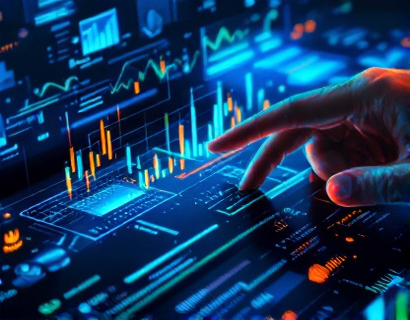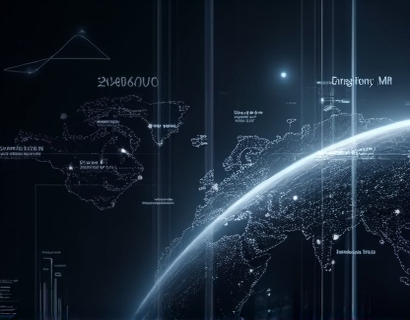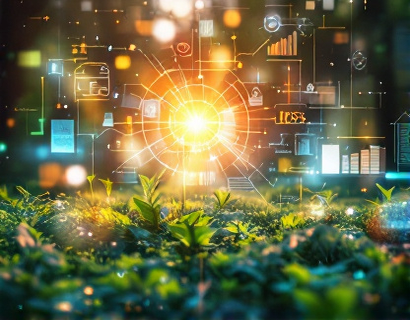Aquaponics Software Solutions: Streamlining Business Management for Sustainable Farming
In the rapidly evolving world of sustainable agriculture, aquaponics stands out as a promising method that combines aquaculture and hydroponics to create a symbiotic environment for fish and plants. As the demand for eco-friendly and efficient farming practices grows, the need for effective management tools becomes increasingly crucial. This article delves into the transformative impact of specialized software solutions designed to optimize aquaponics business operations, enhancing productivity, and promoting environmental responsibility.
The Importance of Management Software in Aquaponics
Aquaponics systems, while inherently sustainable, require meticulous monitoring and control to maintain the delicate balance between water quality, fish health, and plant growth. Traditional manual methods of management are time-consuming and prone to human error, which can lead to system failures and suboptimal yields. Advanced software solutions address these challenges by providing a comprehensive platform for monitoring, controlling, and optimizing aquaponics operations. These tools empower farmers to make data-driven decisions, ensuring a thriving and sustainable ecosystem.
Key Features of Aquaponics Management Software
Modern aquaponics management software encompasses a wide range of features designed to streamline various aspects of business operations. Some of the most critical functionalities include:
- Real-time Monitoring: Continuous tracking of water parameters such as pH, temperature, dissolved oxygen, and ammonia levels. This ensures that conditions remain within optimal ranges for both fish and plants.
- Automated Control Systems: Integration with hardware devices to automatically adjust systems based on real-time data, reducing the need for manual intervention and minimizing the risk of errors.
- Data Analytics: Comprehensive reporting and analytics tools that provide insights into system performance, helping farmers identify trends, optimize resource use, and improve overall efficiency.
- Inventory Management: Tracking of feed, fish, and plant inventory levels, facilitating better planning and reducing waste.
- Scheduling and Alerts: Automated scheduling for feeding, cleaning, and maintenance tasks, along with alerts for critical parameters, ensuring timely actions and system health.
- Integration Capabilities: Seamless integration with other farm management systems, such as CRM and ERP, for a holistic view of business operations.
Enhancing Productivity and Efficiency
The primary goal of aquaponics management software is to enhance productivity and efficiency. By automating routine tasks and providing real-time data, farmers can focus on strategic decision-making rather than daily operations. This shift not only saves time but also reduces the likelihood of human error, leading to more consistent and higher yields. For instance, automated feeding systems can adjust feed amounts based on fish size and activity levels, ensuring optimal growth without overfeeding, which can degrade water quality.
Moreover, the data analytics feature allows farmers to perform in-depth analyses of system performance. By examining historical data, farmers can identify patterns and make informed adjustments to improve system efficiency. For example, if data shows that certain water parameters correlate with lower plant growth, farmers can take proactive steps to address these issues, such as adjusting filtration or aeration systems.
Promoting Sustainability
Sustainability is at the core of aquaponics, and management software plays a vital role in promoting environmentally responsible practices. By optimizing resource use, these tools help reduce water and energy consumption, which are critical factors in sustainable farming. For instance, real-time monitoring ensures that water is used efficiently, with minimal waste. Automated control systems can also adjust energy usage based on system needs, further reducing the carbon footprint.
Additionally, the precision offered by management software helps minimize the use of chemicals and fertilizers. By maintaining optimal water conditions, the natural biological processes within the aquaponics system can effectively manage pests and diseases, reducing the need for chemical interventions. This not only benefits the environment but also produces healthier and more nutritious crops.
Case Studies and Success Stories
Several aquaponics farms have successfully implemented management software, achieving significant improvements in their operations. One notable example is a medium-sized aquaponics farm in the Midwest, which adopted a comprehensive management platform to monitor and control their systems. Within six months, the farm reported a 30% increase in crop yield and a 25% reduction in water usage. The automated scheduling and alerts feature ensured that all maintenance tasks were performed on time, leading to a more reliable and stable system.
Another success story comes from a urban aquaponics project in a major city. By integrating the management software with their existing systems, the farm was able to optimize space usage and increase production capacity by 40%. The data analytics tools provided valuable insights into consumer preferences, allowing the farm to tailor their crop selection to meet market demand more effectively.
Challenges and Considerations
While the benefits of aquaponics management software are clear, there are several challenges and considerations that farmers should be aware of. One common challenge is the initial setup cost, which can be a barrier for small-scale operations. However, the long-term savings and increased efficiency often justify the investment. Additionally, the complexity of some software systems can be daunting for those without technical expertise. To mitigate this, many providers offer training and support to ensure smooth integration and usage.
Compatibility with existing hardware is another important factor. Farmers should ensure that the software they choose is compatible with their current equipment to avoid the need for costly upgrades. It's also crucial to select a provider with a strong support network, as technical issues can arise, and timely assistance is essential for maintaining system integrity.
Future Trends in Aquaponics Software
The field of aquaponics management software is rapidly evolving, with several emerging trends poised to further revolutionize the industry. One such trend is the integration of artificial intelligence (AI) and machine learning (ML) to enhance predictive analytics and automated decision-making. AI can analyze vast amounts of data to predict system failures, optimize resource use, and even suggest crop rotations based on market trends and environmental conditions.
Another exciting development is the use of Internet of Things (IoT) devices, which can provide even more granular data and real-time insights. IoT sensors can monitor environmental conditions at multiple points within the system, offering a more comprehensive view of system health. This level of detail allows for more precise adjustments and better overall performance.
Furthermore, the rise of cloud-based solutions is making aquaponics management software more accessible and scalable. Cloud platforms enable farmers to access their systems from anywhere, facilitating remote monitoring and management. This is particularly beneficial for large-scale operations or those with multiple locations.
Conclusion
The integration of advanced management software in aquaponics farming represents a significant step towards more efficient, productive, and sustainable agricultural practices. By leveraging these tools, farmers can optimize their operations, reduce resource consumption, and produce high-quality crops and fish. As the industry continues to grow, the development of more sophisticated and user-friendly software solutions will play a crucial role in shaping the future of aquaponics. Embracing these technologies is not just a choice but a necessity for those looking to thrive in the sustainable farming landscape.










































